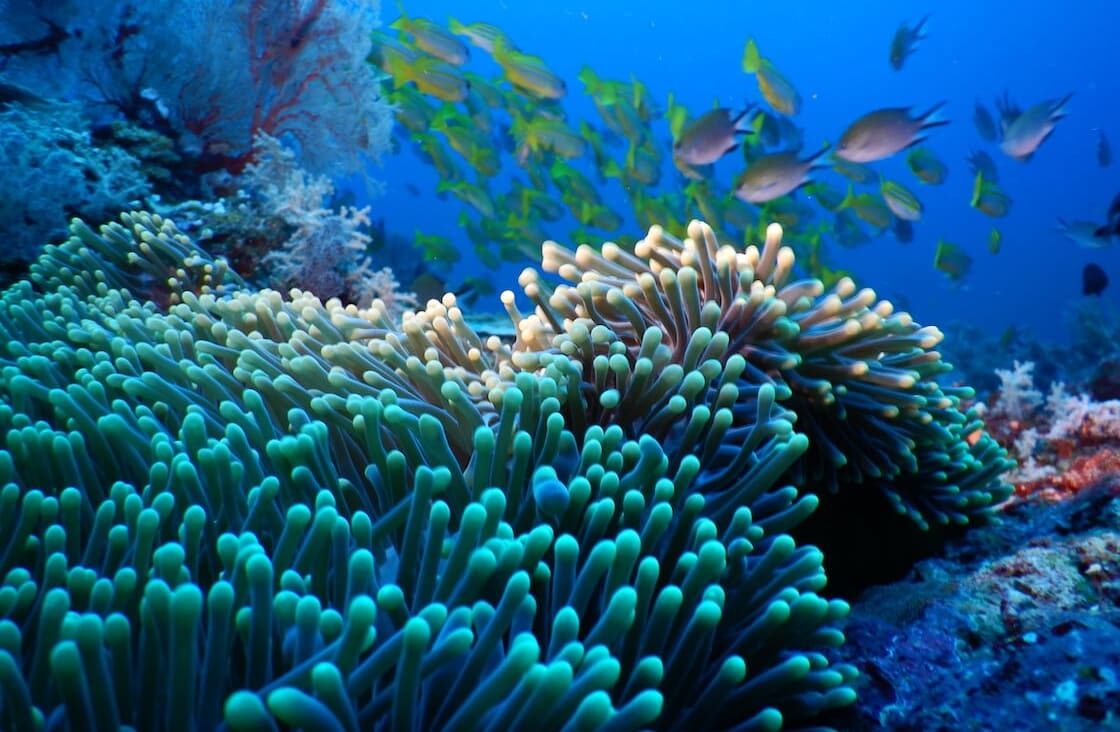
With the Indo-Pacific Coral Triangle at its heart, Southeast Asia offers some of the most spectacular scuba diving in the world. As a consequence of the immense tidal changes from the North Pacific Ocean and the fierce currents and heavy swells of the powerful Indian Ocean, the nutrient rich water has created a magnificent ecosystem flourishing with more than six thousand species of life.
On top of all that, the diving is suitable for all levels, and can be enjoyed from an assortment of superb dive resorts and liveaboards. The warm waters and picturesque landscape will give you some of the best memories in your entire scuba diving life. Here, you will be mesmerized by the colorful reefs and thriving marine ecosystems and you will have the opportunity to explore some carefully preserved wrecks.
So, strap on your BCD, put on your fins and dive into the deep blue waters. Read on to learn about some of the best diving spots in Southeast Asia, in no particular order of merit.

The barrier reef in Sipadan is the largest in the region and is home to the best diving in Borneo, many say in the world.
Hailed as one of the world’s best diving sites, and definitely one of the best dive sites in Southeast Asia, Sipadan Island boasts a rich marine habitat and the largest barrier reef in the region. Situated off the coast of Sabah, Malaysian Borneo, the reef is perched atop an extinct undersea volcano and is surrounded by almost 1900-ft-deep canyons. The site has great visibility, fascinating corals, and an abundance of life. This is a place where you might witness a hypnotic barracuda vortex or swim inside a huge school of whirling jackfish.
While it is a fantastic location to dive all year, the best months to dive are April to December. You are recommended to book your stay as early as possible due to the limited distribution of permits granted to each dive resort and operator in the area. Strong currents are common here, so Sipadan is recommended only for mid to advanced level divers.

Layang Layang’s isolation allows for a true frontier diving experience, and is often referred to as “Shark Central” given the abundant shark species frequenting its waters.
This remote Malaysian island in the South China sea offers undisturbed diving adventures and some of the best diving in Southeast Asia because it is famed for its scalloped hammerhead sharks—amongst a multitude of different shark species—and if you’re lucky, you might catch sight of a school of them gliding by. Manta rays often frequent this deep-water area—there are steep walls plunging some 2000m to explore—but shore dives are also possible.
The dive season is all year round, with higher chances of shark spotting during the mating season in April to May. Suitable for all levels of experience.

Small fry: A juvenile box pufferfish patrols in the Similan Islands, but the national park is more famous for its shark, ray and whale shark spotting.
Thirty miles off the coast of southern Thailand, the eleven islands of the Mu Ko Similan National Park in the Andaman Sea, offer access to some of the best scuba diving in Southeast Asia. Most of the region’s extensive marine life can be found in the waters around the Similan Islands. Between December and April, whale sharks and manta rays can be spotted, while blacktip and whitetip reef sharks, zebra sharks, and leopard sharks are year-round residents. Add to this several types of ray, barracuda, giant trevally, four species of turtle, and an abundance of reef fish and critter life for some exceptional diving.
The National Park is open from mid-October through to mid-May, and the dive season runs accordingly.

In the heart of the Coral Triangle, the Philippines’ Tubbataha Reef National Marine Park is home to at least three quarters of the world’s known coral species.
Located in the Sulu Sea in the middle of the Coral Triangle and designated as a UNESCO World Heritage site in 1993, the Tubbataha Reefs Natural Marine Park has a huge diversity of marine life—you can expect to see whales, dolphins, sharks, turtles, and Napoleon wrasse—and is home to at least 75 percent of the world’s known corals.
The area is only accessible via liveaboard during a short window of time from March to June, making it one of the least crowded dive spots in the Philippines and therefore one of the best places to dive in Southeast Asia. Because it’s so sought after, it’s highly recommended that you book your dive cruise early, possibly even years in advance. There’s truly something for everyone at Tubbataha Reef from shallow waters to the deep sea, and beginners to advanced divers are all welcomed.
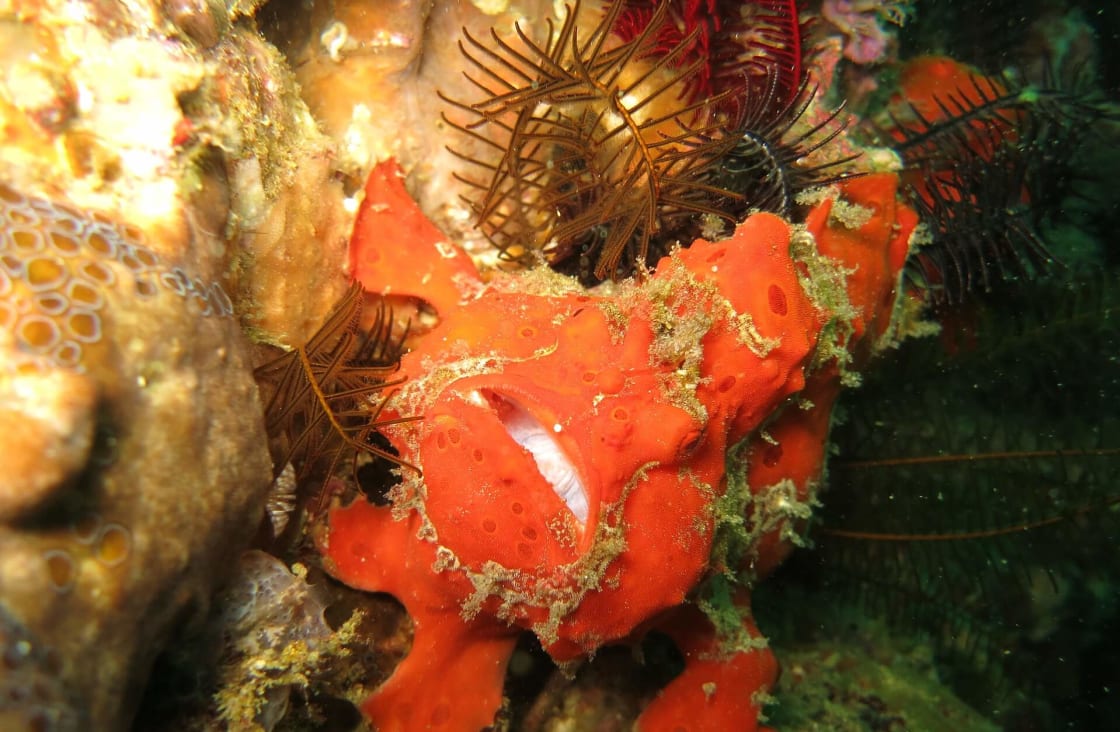
Thresher sharks may be the main attraction in Malapascua, but there’s a myriad of macro opportunities too, as this frogfish photo proves!
There’s a single main drawcard of Malapascua that continues to bring divers from all across the world to visit: The thresher shark. With their long caudal (tail) fins which equal about half the total length of their body, thresher sharks are considered one of the planet’s most attractive sharks. There are very, very, very few places in the world where divers can see them, but if you visit Malapascua, you’ll be able to find them. They are shy, difficult to approach and not aggressive. In fact, there has never been a report of a human killed by a thresher shark. And if you’re not into sharks, there are plenty more fish in the sea.
The diving season here lasts throughout the year.
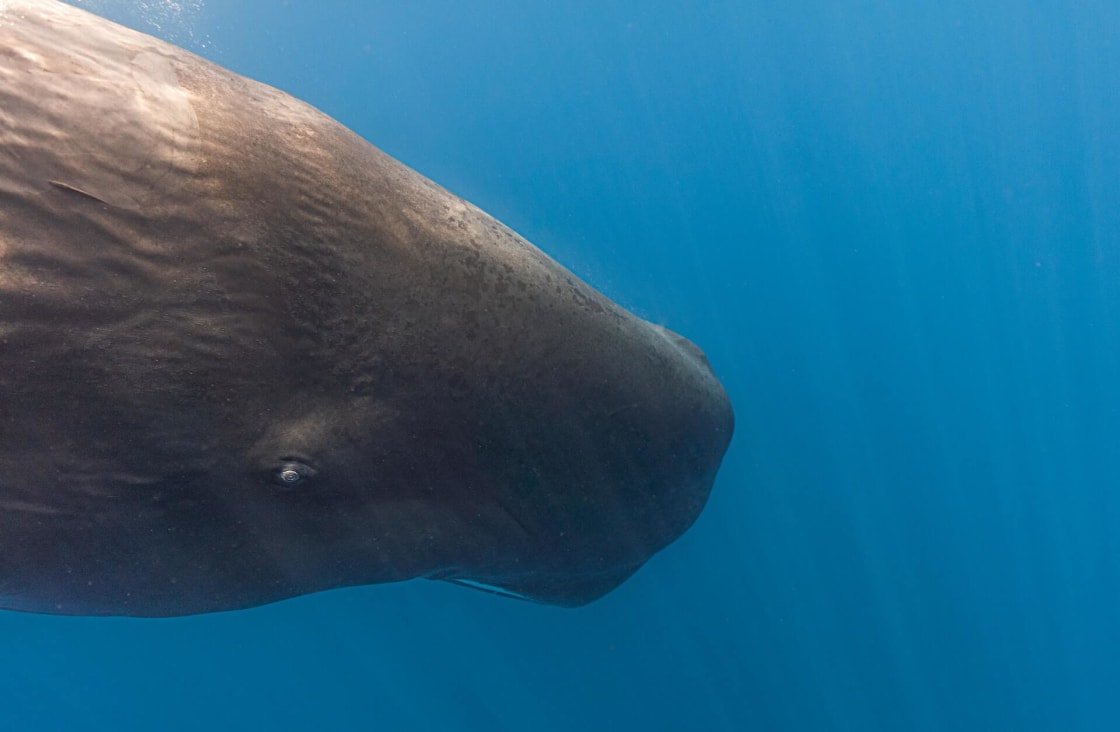
You’ll have a whale of a time diving Timor-Leste’s Atauro Island which is on the whale migration route, with sperm whale and even blue whale spotting possible.
Timor-Leste may not be on many people’s bucket list, but it should be on yours if you’re an avid diver. The diving jewel here is Atauro Island, found just north of Dili, East Timor – and bang in the center of the Coral Triangle. The island is known for its pristine waters and incredible biodiversity, with distinct underwater landscapes including gentle slopes and dramatic drop-offs. Atauro Island is also located on the whale migration route, so you can see blue whales, sperm whales, and more as they migrate from the Banda Sea to the Indian Ocean between September and November every year.
The dive season is from April to November, and the diving here is suitable for all levels.

Melanistic manta rays, whilst rare globally, are commonly spotted in Raja Ampat, with roughly 40% of the population in places having this fascinating color variation.
Famed for its biodiversity, this stunning archipelago off the Indonesian province of West Papua offers an exceptional underwater landscape of never-ending colorful reef walls where hard and soft corals compete for space among large and small marine creatures. The best way to see them is to join a liveaboard and hop around the various dive sites. Raja Ampat covers a huge area, and offers some of the best scuba diving in Southeast Asia.
Be sure to visit the Dampier Strait, where Cape Kri holds the world record for the most species rich dive site. The extensive list of marine life that can be seen in Raja Ampat includes endemic species such as the tasseled wobbegong shark, the Papuan garden eel, and the Raja Ampat epaulette shark, in addition to reef sharks, manta rays, batfish, large schools of tuna and mackerel, and countless reef fish.
The Raja Ampat dive season runs from October to May when the seas are at their calmest; it is suitable for all levels although some of the sites are not recommended for beginners or those who are not comfortable in currents.
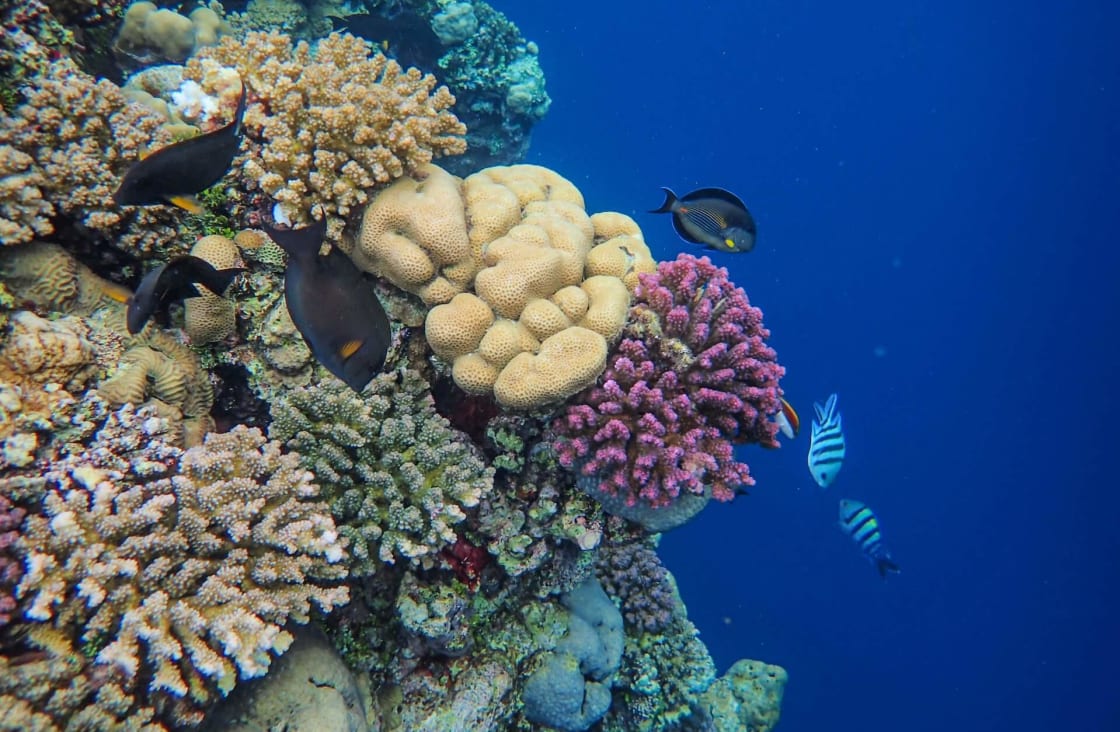
The colorful corals of the Komodo National Park are just one of the attractions of this underwater utopia of world-renowned repute.
If you’re looking for somewhere to dive in Southeast Asia that is easy to access, look no further than Komodo National Park. One of the things that makes this a popular diving destination is its effortless access from Bali (in comparison to Raja Ampat). Bordered by the Sulawesi and Flores Seas on the north side and the Indian Ocean to the south, Komodo National Park is a marine protected area and a UNESCO World Heritage Site offering world-class diving and renowned for its thrilling drift dives, huge schools of fish, healthy and colorful coral reefs, and unforgettable manta ray encounters.
There are two distinct dive areas in the Komodo National Park, the north and the south, and even though they are close to one another geographically, these areas are often worlds apart in terms of conditions. Komodo National Park is also home to the endemic Komodo dragon, the world’s largest and heaviest dinosaur-like lizard, and one of the few with a venomous bite. They can reach up to 10-feet long and can weigh more than 300 lbs. Komodo National Park is an excellent liveaboard destination as a liveaboard can cover the whole area (north and south) in one trip. However, there are also numerous dive resorts and operators available in the area.
For best access to all sites in the park, visit Komodo from April to November.
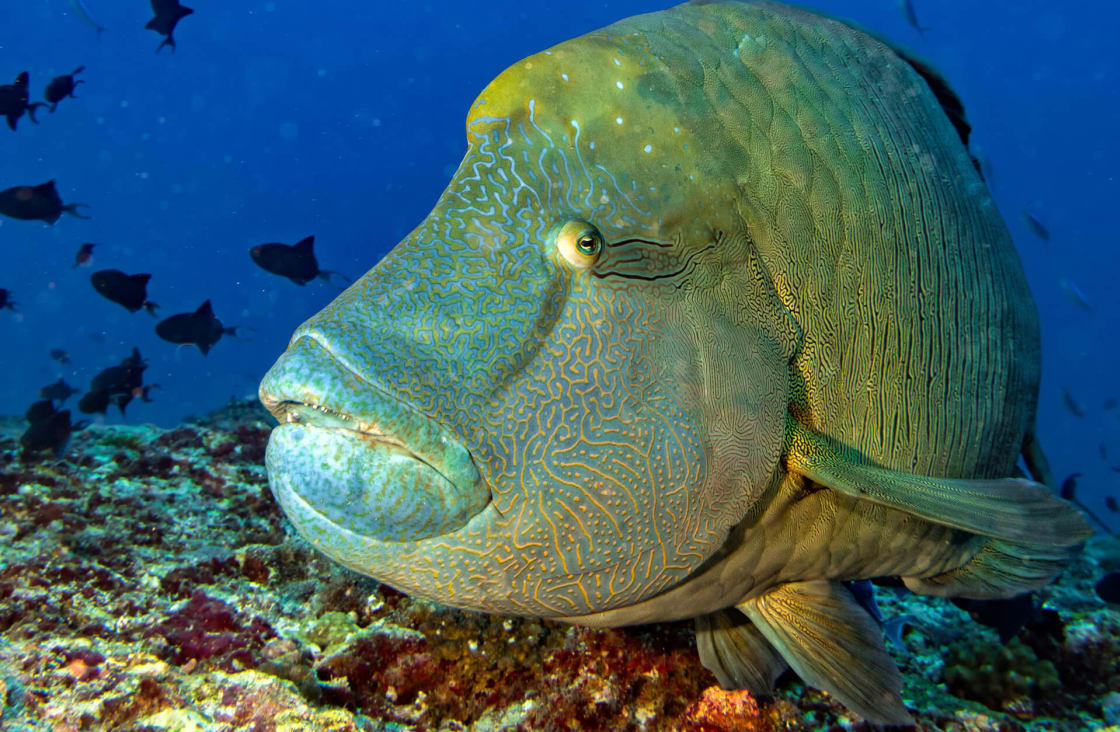
Spotting a Napoleon wrasse, Moray eel and more is easy at Pulau Weh given the incredible underwater visibility around this tiny island.
Perched off the northwestern tip of Sumatra, at the very beginning of Indonesia, the tiny island of Pulau Weh has some of the best diving in Southeast Asia. Its position means that it is not affected by run-off from rivers and so has great visibility. It also receives a lot of nutrient rich currents, which bring with it a kaleidoscope of life. The landscapes on all sites around Pulau Weh are magnificent and diverse. The average visibility is from 60 ft to more than 100 ft, especially when diving deep, and you’ll see a wide variety of marine life from the very large to a wealth of unusual smaller critters.
One of the most popular dive sites is Central Rock, aka Batee Tokong, which drops down to around 70 ft from the surface, before sloping to around 130 ft. Here, you are likely to encounter tuna, trevally, barracuda, turtles, Napoleon wrasse and plenty of reef fish. Larger visitors, such as devil rays and mantas often cruise by too. The slope is carpeted with a garden of large Gorgonian fans and the site is known for huge numbers of Moray eels, which occupy almost every crevice and overhang.
The dry season, and probably best diving in Pulau Weh, is from April to October, but the dive resorts here operate year-round, a particularly good one is Lumba Lumba.
Now you know the best diving spots in Southeast Asia, isn’t it time you chose your ideal Southeast Asia cruise to tick these off your diving bucket-list?
While Rainforest Cruises aim to provide accurate and up-to-date information, we make no representations as to the accuracy or completeness of any information herein or found by following any link on this site. Rainforest Cruises cannot and will not accept responsibility for any omissions or inaccuracies, or for any consequences arising therefrom, including any losses, injuries, or damages resulting from the display or use of this information.




